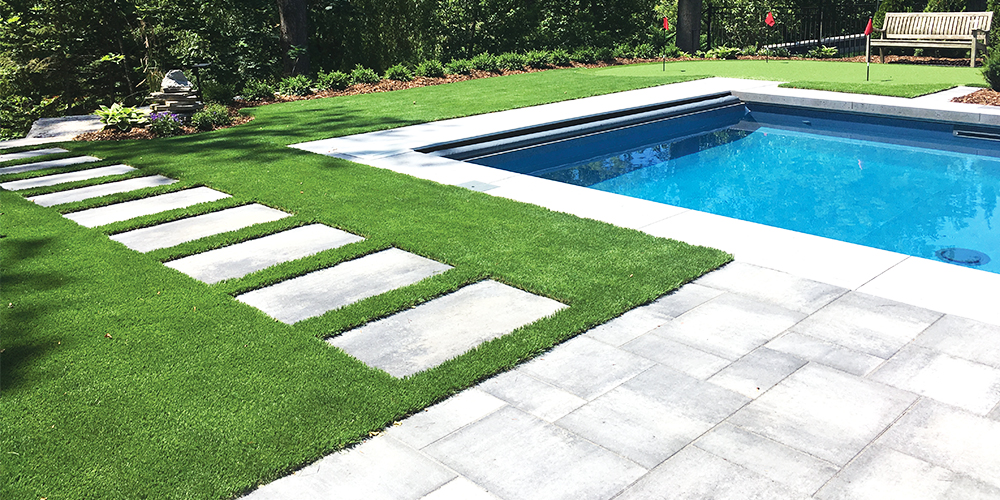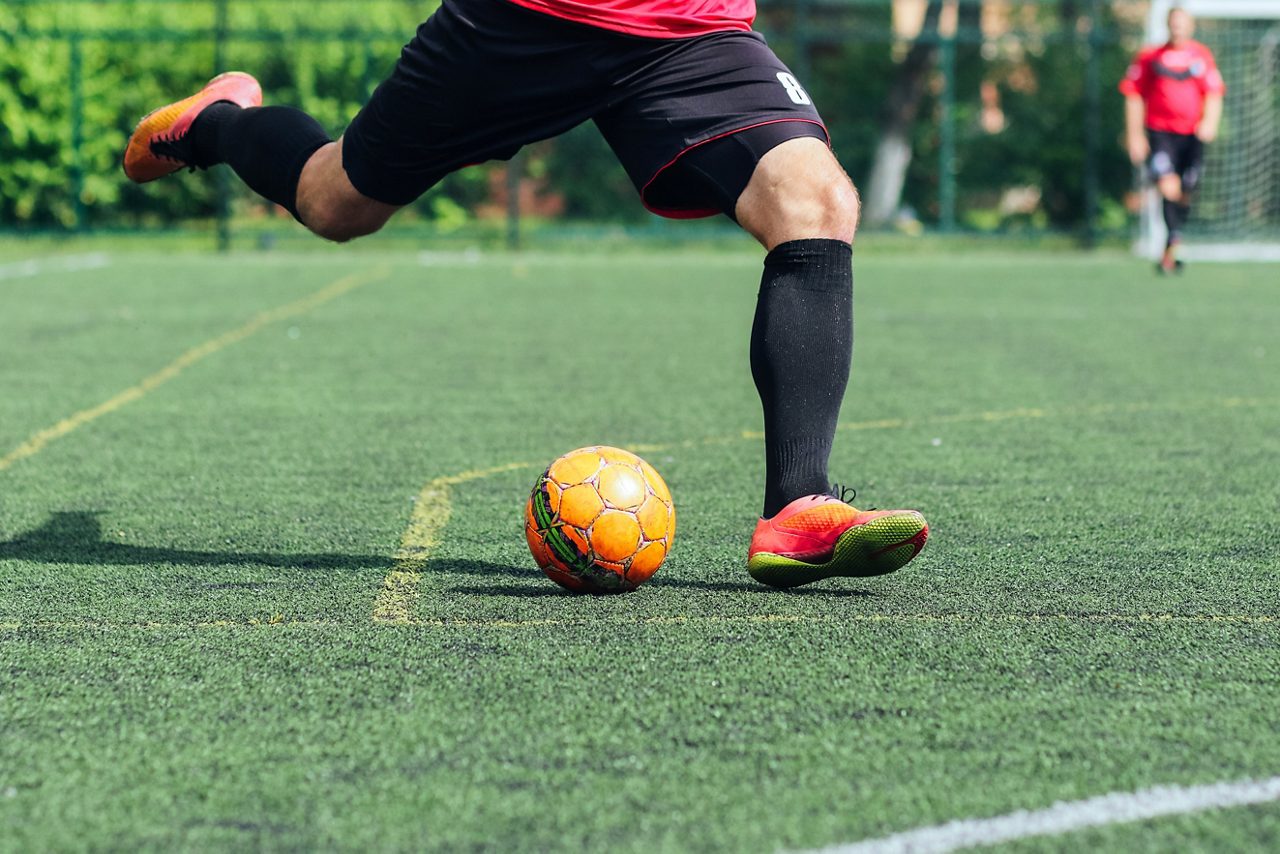Delve Into the Environmental Benefits of Opting for Synthetic Grass Solutions
The fostering of synthetic grass solutions presents a compelling opportunity to resolve pushing environmental difficulties. By dramatically minimizing water usage and minimizing the application of damaging chemicals, these choices not only promote lasting landscape design yet likewise shield local communities. Moreover, the lower carbon impact connected with lowered maintenance tasks adds to a more sustainable approach to land administration. Nevertheless, the implications of these benefits prolong beyond plain conservation initiatives, questioning about their long-lasting effect on habitat conservation and overall environmental equilibrium. Checking out these measurements reveals a complicated interaction worth thinking about.
Water Conservation Perks
Among one of the most substantial benefits of synthetic grass is its ability to conserve water. Traditional grass lawns require substantial watering, especially in areas prone to drought or water limitations. On the other hand, synthetic grass does not need watering, significantly reducing the general need for water resources. This function is specifically helpful in arid areas where water scarcity is a pressing concern.
By getting rid of the need for normal watering, synthetic turf contributes to lasting landscape methods and helps alleviate the environmental influence of extreme water intake. The preservation of water expands to the reduction of runoff, which can lead to dirt disintegration and river air pollution.
In addition, the setup of synthetic grass permits house owners and districts to assign water sources extra efficiently, focusing on necessary usages such as drinking water and agriculture. The change in the direction of synthetic grass not only advertises liable water use but also lines up with wider ecological objectives targeted at preserving natural resources.
As neighborhoods significantly focus on sustainability, the water preservation advantages of artificial turf present a compelling situation for its adoption in property and industrial landscape design tasks.
Lowered Chemical Use
The transition to synthetic grass dramatically lowers the dependence on chemical therapies generally made use of in all-natural yard maintenance. Conventional grass administration normally includes the application of chemicals, plant foods, and herbicides to promote development and control parasites. These chemicals can posture dangers to human health and wellness, regional wildlife, and the setting, adding to soil and water contamination.
On the other hand, synthetic grass removes the requirement for these damaging substances. As soon as mounted, it needs minimal maintenance, mostly containing regular cleansing and occasional infill replenishment. This reduction in chemical use not only benefits the instant atmosphere yet likewise adds to more comprehensive eco-friendly stability. By minimizing the launch of synthetic substances right into the community, artificial lawn promotes much healthier soil and water systems.
In addition, the absence of chemical runoff connected with synthetic lawn installations aids protect neighborhood rivers from contamination, sustaining aquatic life and preserving biodiversity. Arizona turf. As neighborhoods significantly focus on sustainable methods, choosing synthetic grass provides a sensible solution that lines up with environmental preservation objectives. Via this shift, property owners can take pleasure in lavish environment-friendly spaces without compromising environmental wellness, leading the way for a more sustainable future
Lower Carbon Impact

Moreover, the installment go right here of synthetic grass can lead to significant water conservation. Natural yards need substantial quantities of water for watering, which not just contributes to the carbon footprint connected with water removal and therapy yet additionally strains local water resources. In contrast, synthetic grass requires marginal upkeep, requiring no watering, thereby substantially minimizing water use and its linked power prices.
In addition, the long life of fabricated lawn adds to its lower carbon influence. With a life-span of up to 15 years or more, the need for frequent replacements is diminished, resulting in less waste and lower power intake in production and taking care of typical grass alternatives. Overall, synthetic grass provides a sustainable alternative for environmentally mindful landscape design.
Environment Conservation
Habitat preservation is a critical factor to consider in the debate over landscaping choices, specifically when contrasting fabricated grass to natural grass. All-natural turf lawns often call for substantial maintenance, including using herbicides, chemicals, and fertilizers, which can detrimentally affect local ecosystems. These chemicals can seep into the dirt and rivers, hurting native flora and animals and interrupting local environments.
On the other hand, synthetic grass provides a chance to reduce the eco-friendly footprint of landscape design. By choosing for artificial turf, homeowners can decrease the disruption of all-natural environments connected with typical lawn treatment practices. Fabricated grass removes the requirement for hazardous chemicals, thereby securing nearby wildlife and keeping the integrity of bordering ecosystems. Additionally, the installation of artificial grass can cause the conversion of previous grass locations right into even more biodiverse landscapes, such as pollinator gardens or native plant areas, which can sustain neighborhood wild animals.
Inevitably, the his explanation transition to synthetic grass not only saves water and lowers maintenance efforts yet additionally cultivates an extra unified relationship between human activities and the natural atmosphere, promoting habitat preservation in the process.
Long-Term Sustainability
Long-term sustainability is an important consider assessing go to these guys the advantages of artificial lawn over standard lawn lawns. Among one of the most considerable benefits of synthetic grass is its sturdiness; it can last as much as 15-20 years with minimal upkeep, whereas all-natural turf calls for constant reseeding and replacement. This long life lowers the requirement for constant sources, such as water, fertilizers, and chemicals, which are necessary for maintaining a healthy and balanced turf lawn.
In addition, synthetic grass adds to a reduction in carbon exhausts connected with lawn treatment equipment. Typical yards often need gas-powered mowers, leaners, and blowers, all of which add to air pollution. Phoenix turf companies. In contrast, synthetic grass removes the requirement for such tools, promoting a cleaner setting
Additionally, the production of man-made grass increasingly uses recycled materials, improving its sustainability profile. As suppliers embrace environmentally friendly techniques, the environmental impact of artificial lawn remains to lessen.

Verdict
The fostering of fabricated grass solutions offers considerable ecological benefits, including significant water conservation, lowered reliance on harmful chemicals, and a reduced carbon footprint. Artificial grass help in preserving all-natural habitats by lessening land disruption and promoting lasting sustainability through the usage of resilient products. Collectively, these aspects underscore the capacity of synthetic grass to contribute favorably to environmental health and wellness and offer a sensible option to traditional landscape design practices in a significantly resource-conscious world.
In comparison, synthetic lawn does not need watering, dramatically minimizing the overall demand for water sources. By lessening the release of synthetic substances into the environment, artificial grass advertises healthier soil and water systems.
In addition, the installation of fabricated turf can result in significant water preservation. In comparison, synthetic lawn requires minimal upkeep, requiring no watering, consequently dramatically reducing water usage and its associated energy prices.

Comments on “Custom Turf Installation Phoenix AZ for Homes, Companies, and Recreational Spaces”